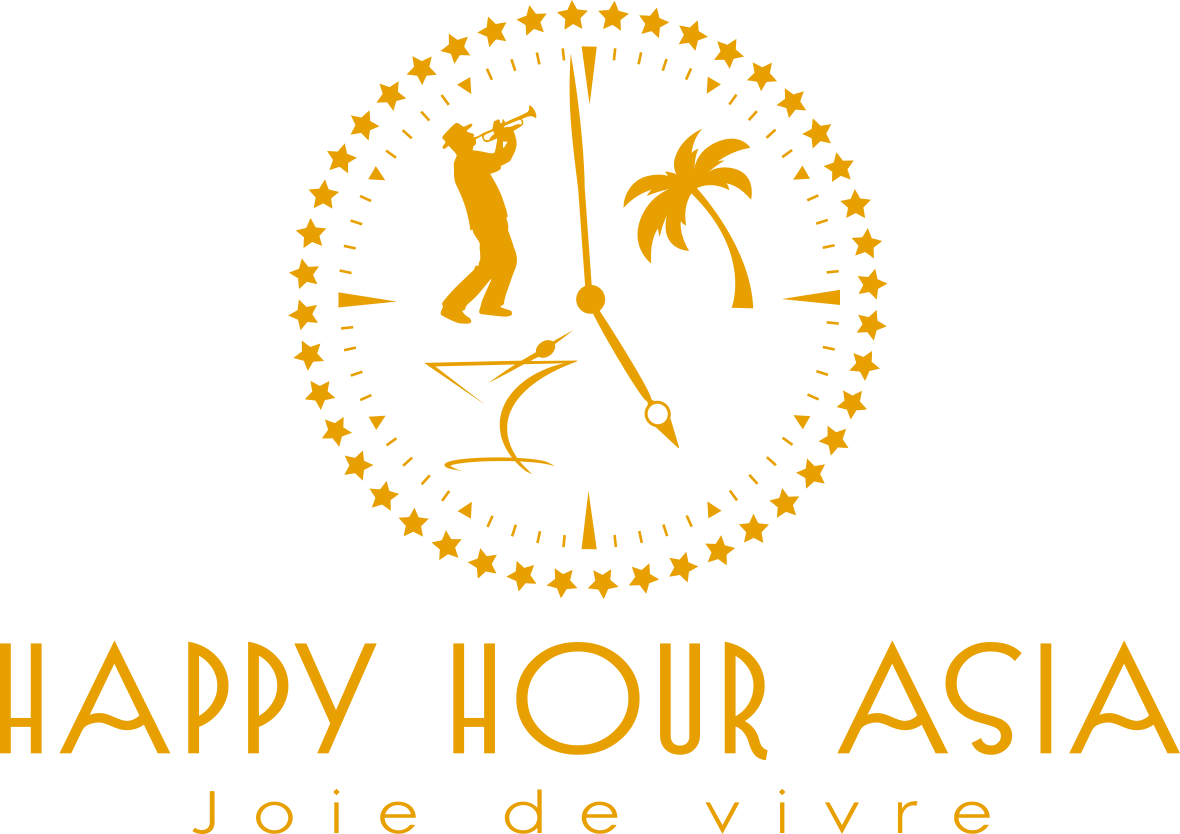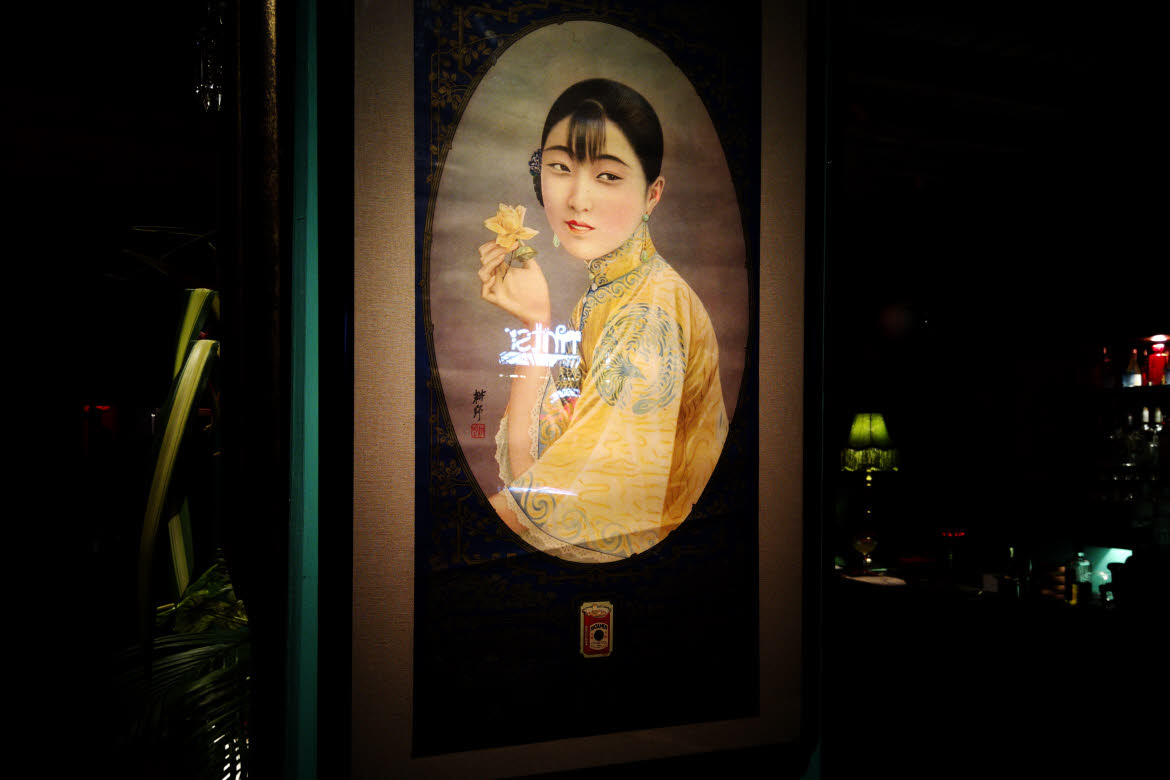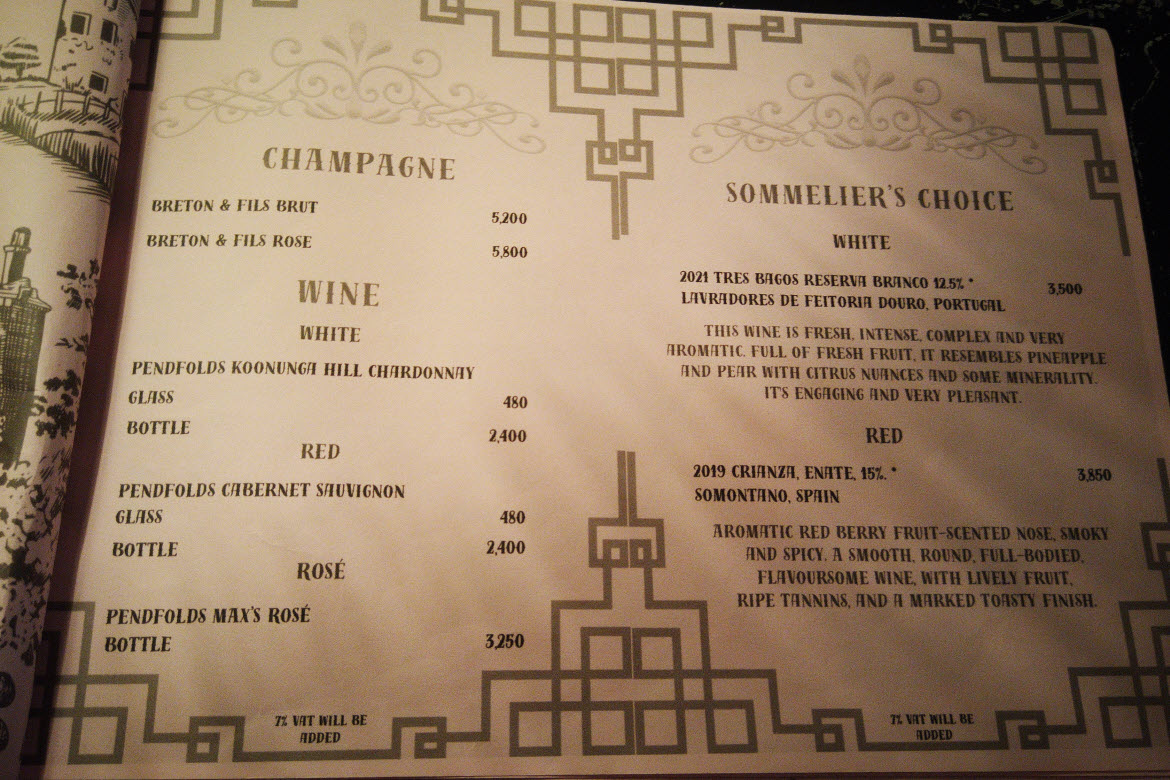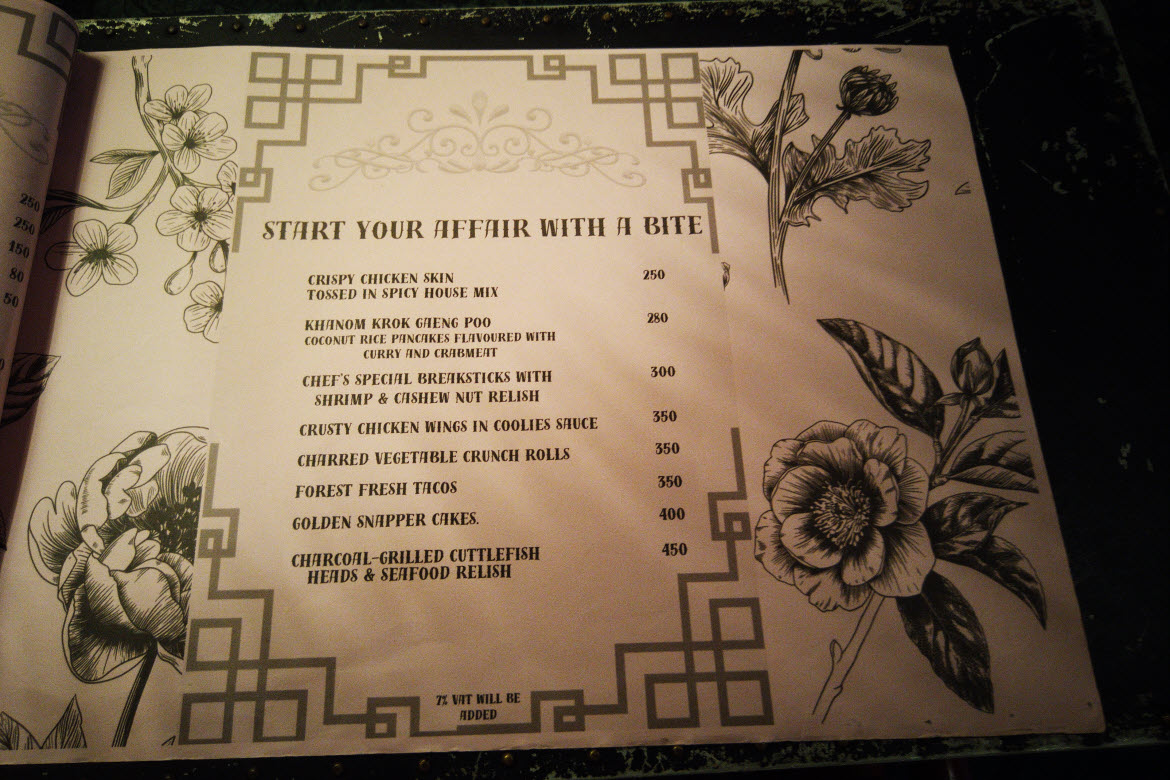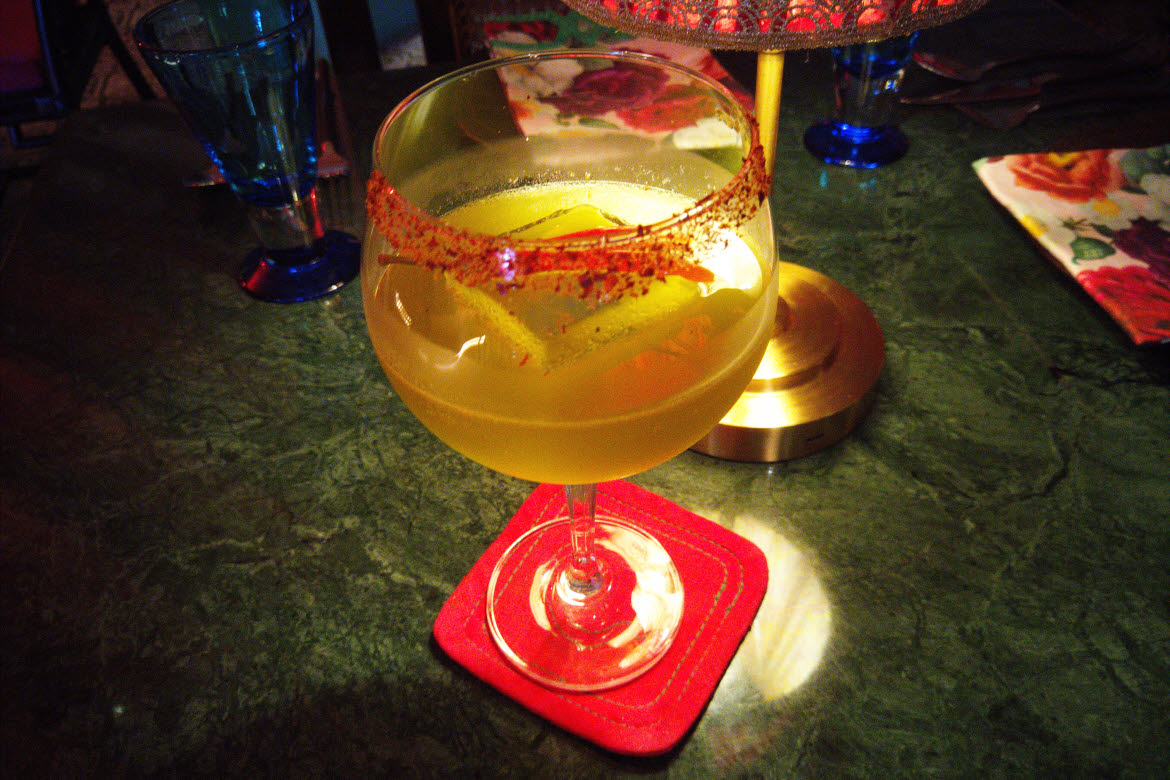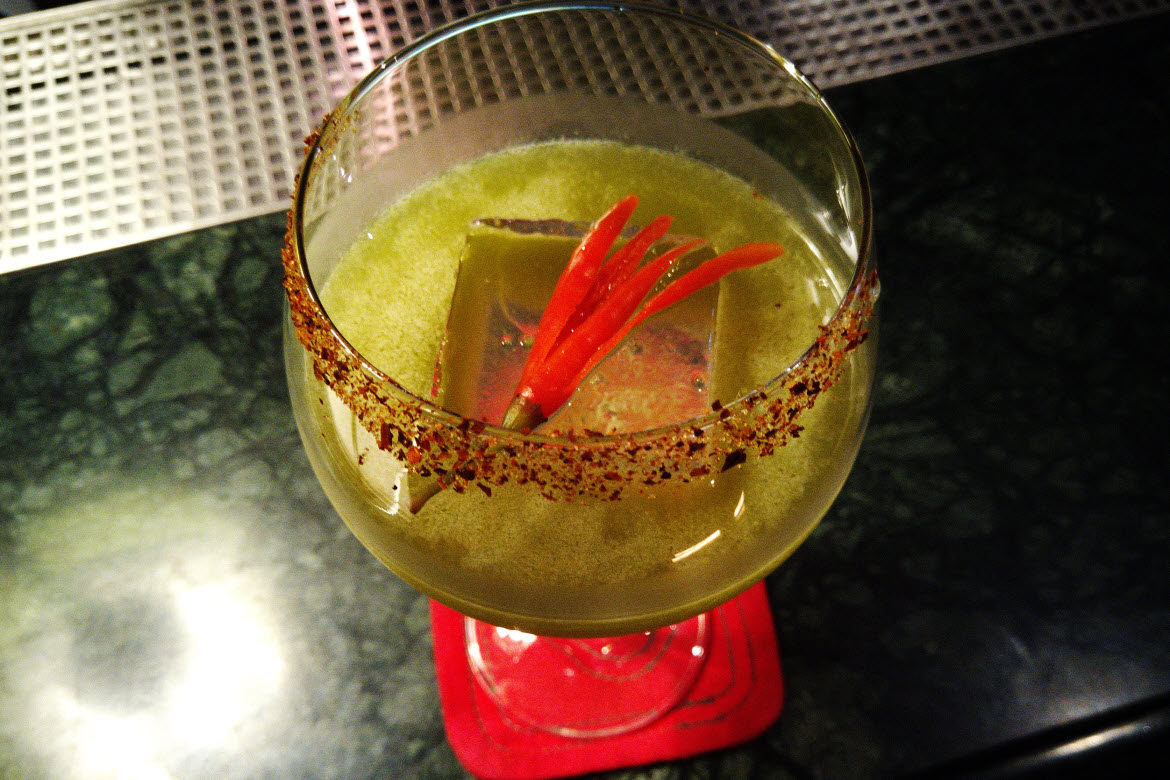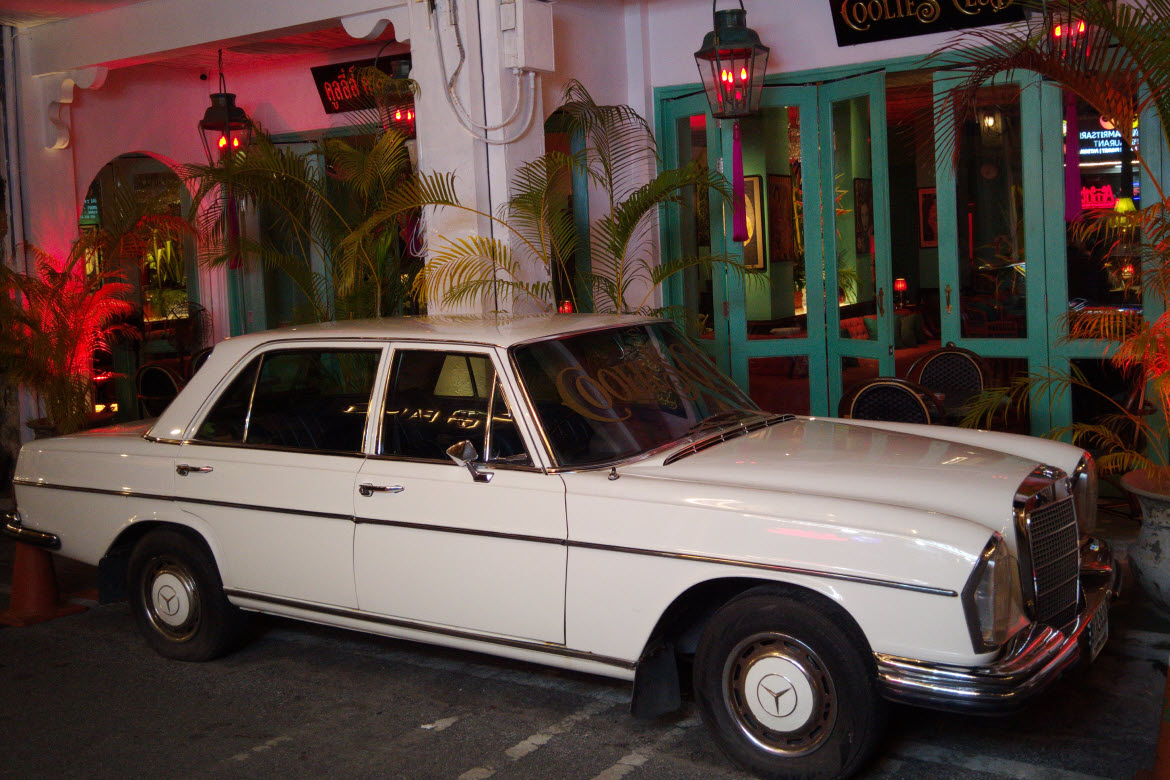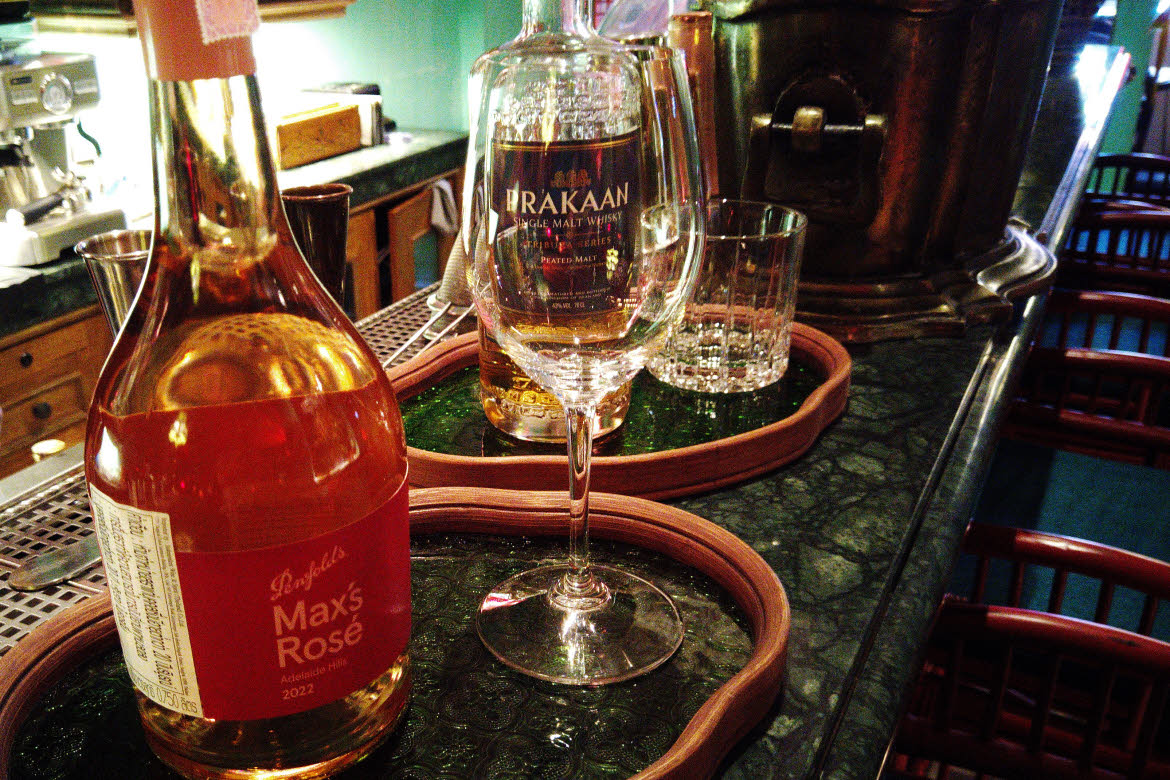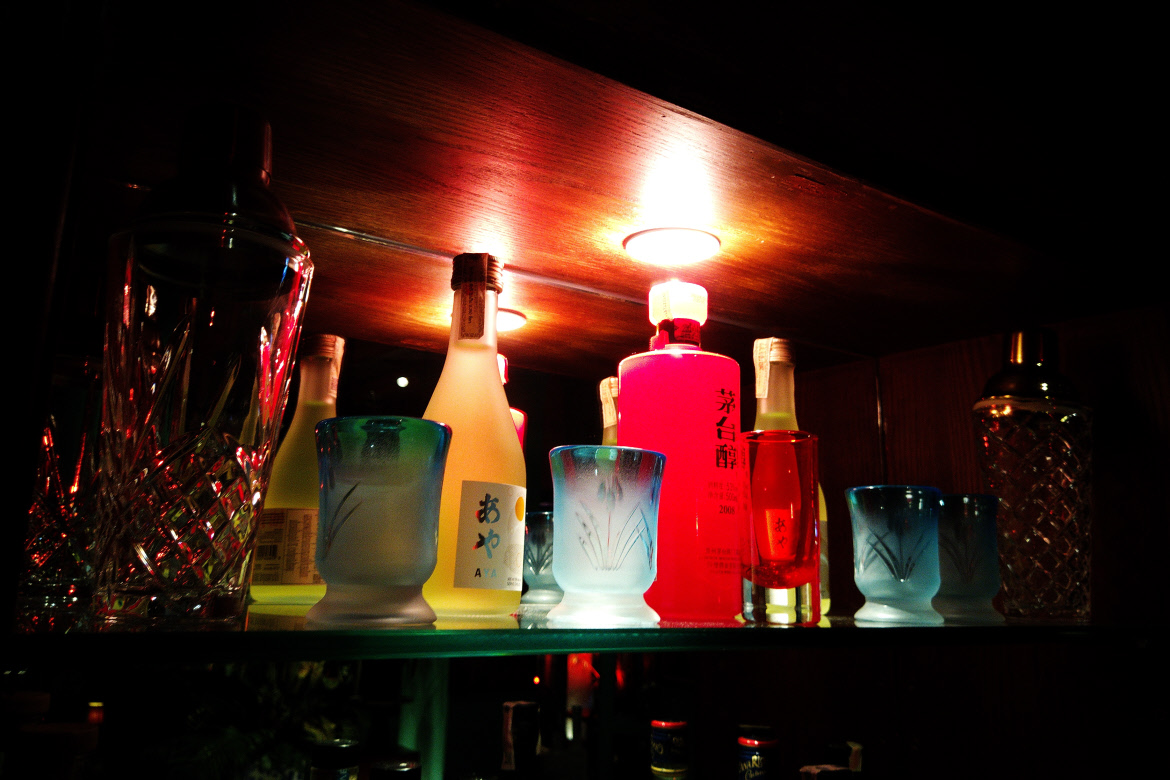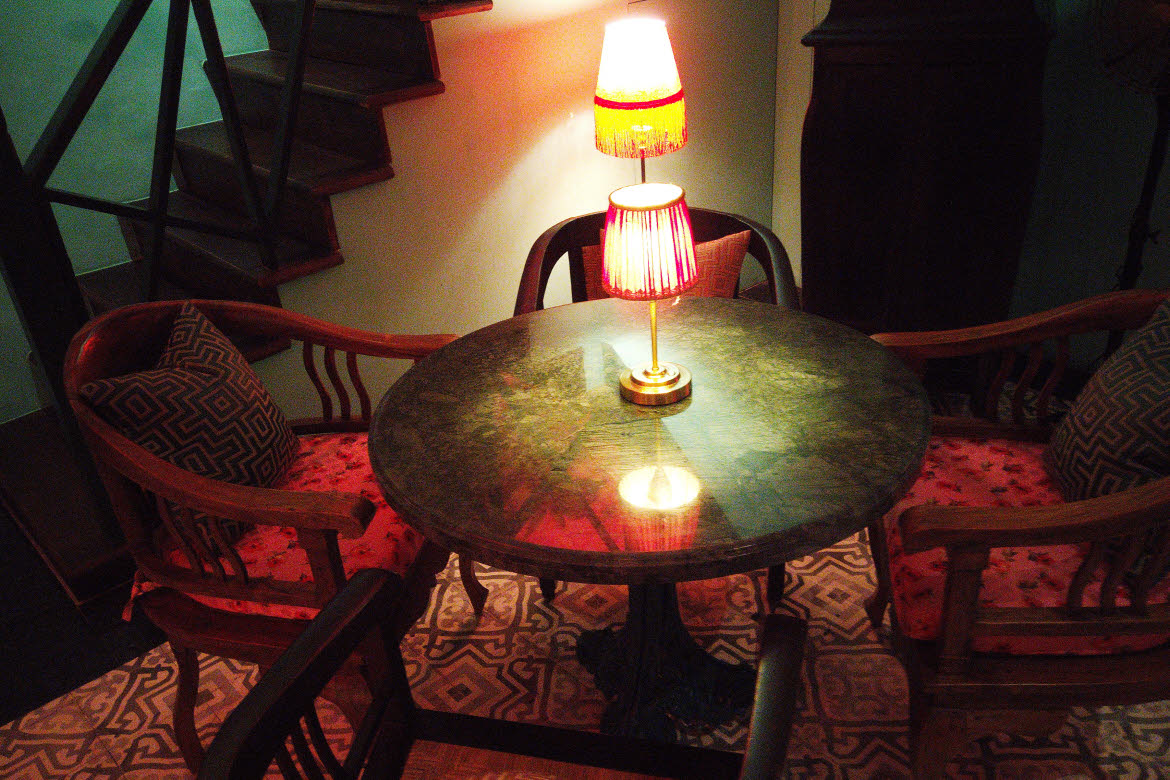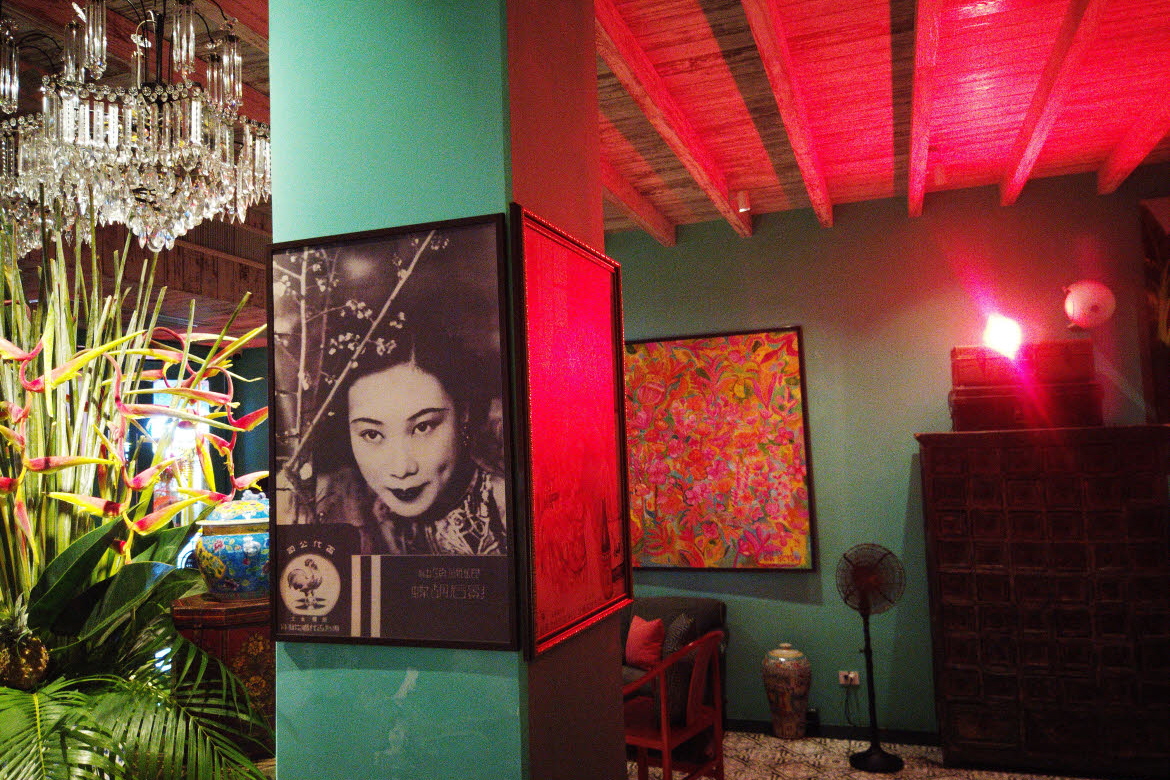Coolies Club Phuket Town review: To give this very special cocktail bar and restaurant its right context this coverage also delves into history.
With the improved public transportation from the touristy west coast most likely being a contributing factor, paired with the island city’s Sunday market, Phuket town is increasingly becoming a draw for visitors to the island. People go there for its interesting architecture (locally called ‘Sino-Portuguese’ – and which is related to the former British colony in Penang, Malaysia), and the abundant selection of charming shops, cafés, restaurants and bars. And it is a truly unique discovery different from elsewhere in Thailand mainly due to the island’s fascinating and vibrant history (though there are also buildings built in colonial-European style elsewhere in the country, such as in the older parts of Bangkok and China towns).
The characteristic Old Phuket town consists in ‘Peranakan’ buildings (Southern Chinese settlers to maritime Southeast Asia forms the basis for the emergence of this culture, dating back to the 15th century – in Penang called Baba-Nyonyas), which to many new visitors becomes a discovery in its own right – and deservedly so.
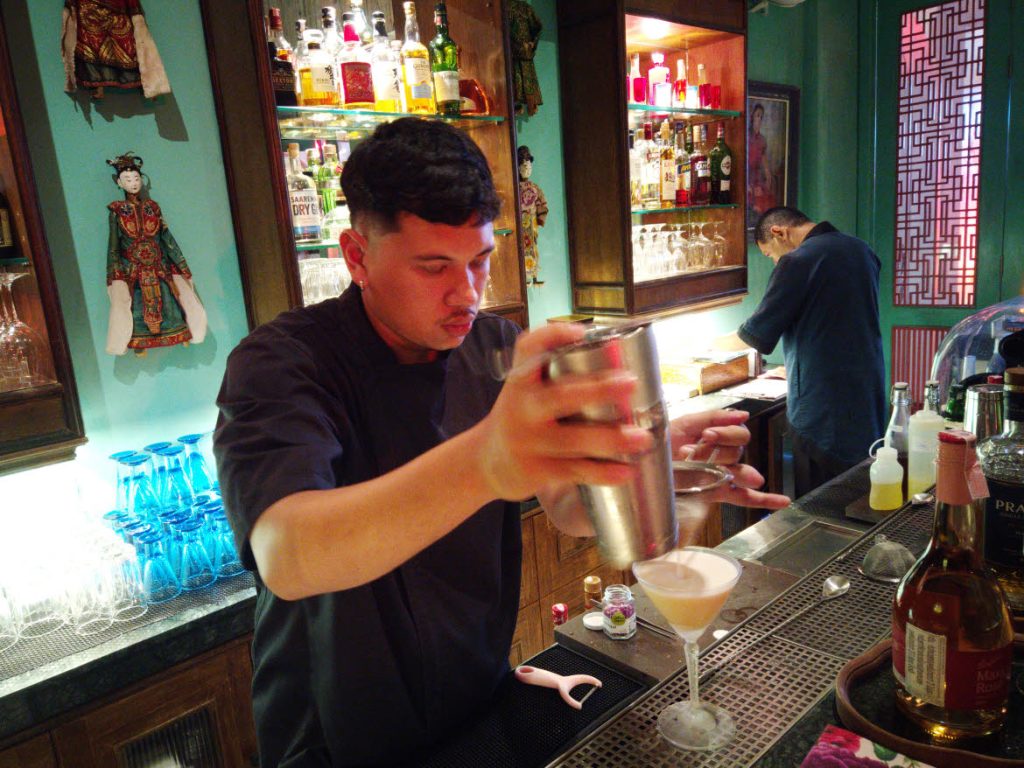
Bartender at Coolies Club
In recent years, some newly built hotels have also embraced this cultural history and the architecture from Phuket town – for both architecture as well as interior design. Among those find the rebuilt The Slate Phuket (formerly Pearl Village), owned and run by a family directly connected to the island’s past as well as to its development into a renowned tourist destination.
The Slate is described as an avant-garde sanctuary, with bold and imaginative design and features industrial elements. And behind its concept and the island’s past is a successful era of tin mining, which brought lots of Chinese to the region, including Phuket. This tin mining past (which lasted up until the early 1990’s) resulted in a special merging of Chinese, Western and Thai cultures.
The ancestors of the family owning The Slate Phuket today came from China to Phuket in 1912, which led to involvement in tin mining. Fast forward to today, when this heritage and the traditions form the design concept for the hotel, which was transformed under the creative mastery of the famous architect, interior designer and art collector Bill Bensley (behind some of the world’s most iconic hotels, resorts, spas and homes).
The hotel owner family Na-Ranong also owns a shophouse in Old Phuket Town, and this is where a strong connection between the hotel in north Phuket and a newly opened bar falls into place: Coolies Club – also forming a perfect excursion for the hotel’s guests. Others, simply bumping into this venue along the famous cross-street called Soi Romanee may ask: “‘Coolies’ – what does it mean?” Answer: It was the name of foreign labourers – of whom many came from Chinas back in those days.
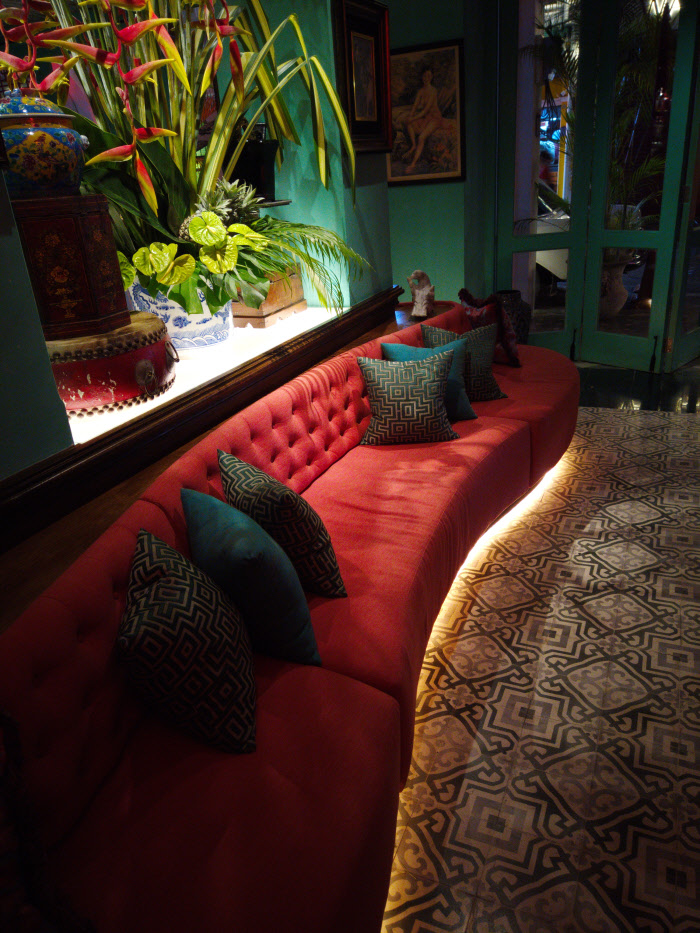
Sofa at Coolies Club
Chinese Coolies are the first of the Malaysian early settlers that came over as early as the 15th century till the formation of independent Malayan state in 1957. The early settlers were traders, most of them coming from Fujian and were striving during the China Southeast Asia maritime trade. Later, the mid-18th century saw a rush of Chinese immigration continuing into the 19th century lured by the lucrative tin mining concessions granted by the Malays rulers.
This was the beginning of Chinese Coolies (settlers) making their permanent homes in Malaya, settling in many parts of Malaya – and also coming to the island of Phuket. This also points to – and explains – Phuket’s strong connection to Penang (unknown to most of today’s visitors), and the establishment there by the British of a trading post by Sir Francis Light (who also came to reside on the island of Phuket for some years).
A search on Google for ‘coolies’ photos include, in the results, a stock photo in black and white from around year 1900: “Thailand: Tin miners stand beside a pile of tin ingots stacked in front of a commercial shophouse in Phuket town”. 125 years ago.
Turning the family house (constructed by Chinese workers in 1883) that is at the heart of her family’s tin mining legacy into a bar venue, The Slate Phuket’s owner Krystal Prakaikaew Na-Ranong has named it in honour of the coolies, including her great grandfather.
In doing so, Krystal has interestingly also established a direct correlation between then and now within entertainment: Phuket town was the centre for yesteryear’s entertainment – where the miners enjoyed bars, opium dens, brothels as well as gambling houses. And, in fact, Soi Romanee was at the very heart of this red-light district. Romanee even means ‘pleasure’!
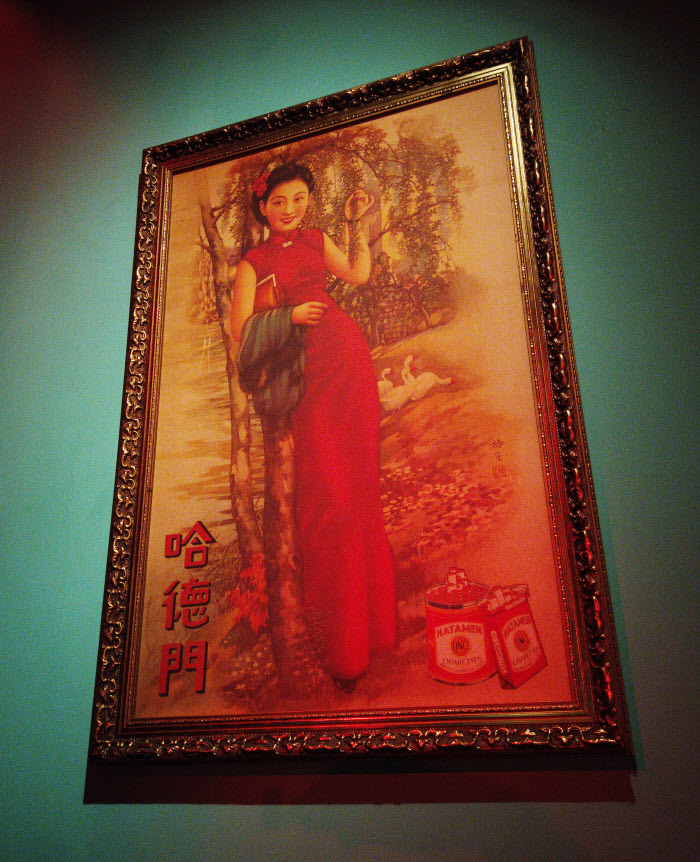
Poster from vintage Hong Kong
For the creation of this unique concept bar, combine Bill Bensley’s amazing design skills with this coolies history and the red-light district – and you have the ingredients for something special, and unusually intriguing. The result, in Bill Bensley’s own words, conveys the experience of those former leisure palaces of the red-light district, with a modern twist.
And, as Happy Hour Asia uses the tagline ‘Joie the vivre’ it is nice to read that owner Krystal refers to the same motto when expressing how Coolies Club should remind of how such celebration of life could be back then in the 19th century, when sailors, gypsies and labourers flocked in Phuket from around the world!
Parked outside, the “valet” parking is taken up a vintage car, which basically forms part of the interior and makes the entrance recognisable. Its façade comes in white, turquoise and antique red.
The building is representative of the Sino-Portuguese architecture, also known as ‘Chinese Baroque’ a unique hybrid architectural style that emerged in China, particularly in cities like Harbin, by blending elements of Western Baroque with traditional Chinese architectural features. It’s characterized by the integration of European architectural elements like pediments, columns, and facades with Chinese Dougong, symbols, and quads.
Through open glass door a vintage-influence “home” with bold colours reveals itself; one that has been equipped with a long bar along one side, and with various antique-looking dining tables and chairs spread out elsewhere, in addition to curvy velvet sofas. And at the back, through a backdoor, one finds additional seating inside alcoves in a roof-covered small courtyard.
The flooring comes in a classic Peranakan pattern. Walls and pillars are painted in jade green, while the wooden ceiling includes characteristic beams. Here and there large vases and vintage-style fans and reclaimed tin pieces, are place on the floor, along with memorabilia, such as ad posters (for tobacco and liquor) of Chinese ladies from yesteryear’s Hong Kong, hung on the walls – exactly the sort of collection items that Mr Bensley is such a master at finding and sourcing.

Cocktail menu and cocktail: ‘Fire in Chinatown’
More as a slice of modernity a large painting depicting jungle floral vegetation covers a wall, as if to remind us all of that Phuket once used to be dense jungle full of tigers and other wildlife… There are lots of details to explore – really a place to behold!
Perhaps unsurprisingly the Coolies Club cocktail menu also takes cue from the coolies’ heritage, but it is more about the way it has been creatively accomplished – to be able attract guests with some very unique concoctions that appeal to guests both in terms of taste and unusual flavours, while at the same bringing drinkers back in time to the coolies’ era. And the menu comes with a graphic design nothing of the sort you have seen before! It feels highly authentic as something very vintage. Bar staff are dressed in a kind of coolies’ blue-collar dresses.
Two of the ‘House-crafted cocktails’ that stand out are the following:
- ‘Fujan fumoir’: This concoction uses smoky vodka with Lapsang Soughong Tea from Wuxi mountains in Fujian province brewed 1-2 days in advance. The smoked wood vodka is meant to capture the essence of those opium-laced nights “…where rumour provided refuge from the world outside.” “Smoke hung low where Fujian coolies gathered…”
- ‘Fire In Chinatown’: Tequila, mezcal, fresh herbs and notes of the cuisine; Inspired by seafood sauce it uses the unique ingredient: shrimp powder! With the mezcal – a fiery spirit – and with culinary richness this makes a bold and vibrant cocktail full of flavour. And it is garnished with a chili cut to exactly resemble the flower petals of a certain familiar tropical flower. It’s a really a perfect pairing of spices and spirits! “Each sipe is a journey through the bustling streets of Chinatown.”
There also bites to go with the drinks; such as: Forest fresh tacos, Golden snapper cakes, Charcoal-grilled cuttlefish heads & seafood relish, or Chef’s special breadsticks with shrimp & cashew nut relish.
Guests can also order champagne and wine including a few sommelier’s choices. In addition, there is a ‘Gin & Tonic selection’ as well as ‘Classic Concoctions’ from more familiar territories, including Caipirinha, Aperol Spritz and Mango Daiquiri.
Two more house-crafted concoctions are: ‘Miner’s Whisper’, which is a wood-smoked negroni. This cocktail reflects a quiet moment after a hard day’s work. Its subtle smokiness evokes the breath of a miner who has spent the entire day in the depths of the mine. With such a description it is quite impossible to have a drink at Coolies Club without noticing its references to something culturally unique…
‘Courtesan’s Kiss’ – Embodies the elegance and allure of a courtesan’s life. This cocktail uses Chinotto Orange – a Campari that brings a bitter edge representing the bittersweet nature of courting secretive and often tumultuous relationships with married men. Each sip is a tantalising experience much like the unforgettable moment spent with a courtesan, leaving a lingering impression that beckons for more.
So, like the coolies back in the past, perhaps a visit to Coolies Club will leave you with tempting and even irresistible tastes and a pleasant experience of the kind that will draw you back for more…’
See also: Coolies Club, designed by Bill Bensley, opens in Old Phuket Town
